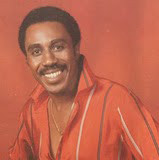
C.L. Blast
voc, US
Singer of R&B/Soul
A.k.a. Clarence Lewis Jr. Junior Lewis Little Junior Lewis
Vocalist C. L. Blast was originally from Birmingham, Alabama, where he came into the world as Clarence Lewis, Jr. By 1954, he was in New York recording for Bobby Robinson's Red Robin label as Clarence 'Junior' Lewis, with one single issued in 1955. He died February 26, 2016 in Birmingham, Alabama, USA. He was 81 years old. In 1960, he cut at least three more singles for Robinson's Fury label, using his given name on one and Little Junior Lewis for the other two. He also did some songwriting and possibly production/engineering work for Robinson's operations in that period. And therein lies the New Orleans link. He shares co-writer credit with Lee Dorsey and Robinson on Lee's first giant Fury hit, "Ya Ya" from 1961. I do not know the extent of their collaboration or exactly why Lewis' name is on the record, as Robinson claims that when he came to town to record Dorsey, they got together and wrote the song in a New Orleans bar. Interestingly, Lewis also has writing credits on some other major Fury/Fire tunes of the era, including Elmore James' blues classic, "The Sky Is Crying", Buster Brown's "Fannie Mae", and the Don Gardner/Dee Dee Ford raver, "I Need Your Lovin'". Once he separated from Robinson, Lewis recorded for Columbia, Scepter, and MGM in the first half of the decade. But his recording career did not make much noise, even though he was blessed with a strong, soulful voice. Lewis reappeared in 1967 as C. L. Blast on a single released both on Stax and, for some reason, on its subsidiary, Hip, too; but his association with either of the Memphis, TN labels went no further. Those sides appeared on the Stax CD box set reissue series some years back and were my first introduction to the singer. Around 1970, Blast made a few records under the direction of Wardell Quezergue. As well as the sides I'm featuring, they were "Everybody Just Don't Know What Love Is" b/w "Got To Find Someone" * on Pelican and "What Can I Do" b/w "I'm In A Daze" ** for United Artists. Though all good soul records, none of them hit pay-dirt; and Blast kept moving through the rest of the Seventies and early Eighties, recording for the Clintone, Juana, Cotillion and Park Place labels, never getting the attention that his rich vocal talents deserved. From looking at his BMI songwriting credits, I believe that later in life he took up gospel music. I first heard "Two Time One Is Two" and "Love Is Good" on the Funky Delicacies compilation, Wardell Quezergue's Funky Funky New Orleans and put them on my list. It took some searching, but I finally found this near mint siingle, which sounds a bit better than the vinyl source used on that CD. The Crestown imprint seems to have been a one-shot deal, as I can find no other listings for it. At the time, Quezergue was calling his operation Pelican Productions, which put out this 45 and had an associated label, Pelican Records, as well. Pelican released a few more singles, including the one by Blast mentioned earlier; but no commercial rewards were forthcoming from any of them. The producer began to do a lot of work at and with the fledgling Malaco Studios in Jackson, MS in 1970, most notably bringing Jean Knight and King Floyd there to record and producing their first smash hits. I would guess that his main impetus for the change of venue out of New Orleans was the demise of Cosimo Matassa's Jazz City studio, which severely impacted sessions in the city for several years. I bring this up because I am not sure where Quezergue recorded C. L. Blast. From the general date of the recordings, l'd guess they are Malaco sessions. Although the arrangements are not as stripped down and genuinely funky as the early Floyd and Knight sessions, they are good examples of Quezergue going for a more uptown, orchestrated soul arrangement and Blast delivering the goods vocally. While you can hear some tinges of funk within these tracks, there is nothing about them that would overtly tip you to an HOTG connection; and this was likely Quezergue's goal, attempting to appeal to a wider, more mainstream soul audience. The fact that this single has languished for over 30 years in relative obscurity goes to show that he failed to achieve that objective. Still, he helped to make a damn fine record. The music business is littered with talented artists, good intentions, and great records that went absolutely nowhere. Luck of the draw. Let's just be glad some of them still turn up now and again for our time-shifted enjoyment. Dan Phillips http://homeofthegroove.blogspot.com/2007/04/having-double-blast.html
Genres
Popular Tracks 

Track list and 30sec audio provided by ![]()
